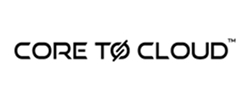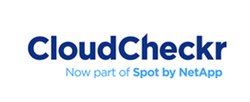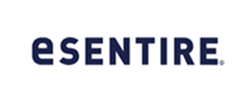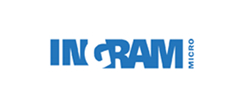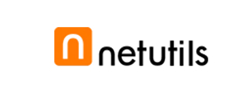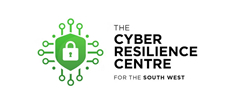Their gift from the Pandemic means they escaped the incessant calls from enthusiastic cold-callers by becoming remote workers and not offering out their mobile numbers other than to trusted contacts.
At last, there was an excuse not to respond to the constant barrage of requests to attend City-based breakfast briefings, lunch and learns and evening networking events from people they don’t know, or products they haven’t got projects for. Yet these were quickly replaced by virtual wine tasting, celebrity webinars. The thought of virtual anything is now wearing thin too.
How do you become a trusted contact?
Think about what you do when you’re thinking of buying something of significant value that’s going to be around a while. A car maybe?
You plan for it, you work out the budget, research online and then, you go hand over information that means you can “touch it” – either face to face at a showroom (in our world a meeting), or virtually online using build tools (in our world a Webex demo). It feels good. You start a conversation. Then you may buy it. You may not straight away, or at all. It’s just part of an evaluation process and many factors influence a decision.
Even if you don’t make the sale here, you have established a rapport. A relationship. A positive experience of the brand you work for. The possibility of future conversations and other potential sales.
Like it or not, jumping in before a buyer is ready is a turn-off. As web-savvy millennials increasingly make procurement decisions, B2B buying will depend on independent research rather than one-on-one conversations with sales reps. With 41% of millennial workers already making or influencing B2B purchasing decisions, over 60% say they don’t reach out to salespeople until after they’ve done their homework and figured out what they want to buy.
To shape buying decisions, B2B sellers will have to start supporting buyers with accurate, compelling product information. Think like a guide, not a salesperson: your aim isn’t just to make a sale, but to provide customers with the help they need as they progress through their journey. Your goal is to offer customised but consistent product information that continues to guide them as they navigate ads, branded websites, communities, and other touchpoints you (and your competition) offer.
Yes, it will. But not if you continue to drive quarterly, tactically driven, hard-sell approaches. Or if you haven’t invested in the right tools and people to provide intelligence backed responses. When modelled on the B2C approach it will not only deliver a consistent, measurable pipeline over time but also higher-value business in the long run.
Social selling now drives nearly 40% of consumer purchasing decisions and B2B sellers want some of that action. LinkedIn, which accounts for around 80% of social leads is the obvious place to begin, but that’s not all. Think about where your customers congregate online and keep an eye out for emerging social media channels, too. The edges between when social tools were deemed “home” and “work” are now very blurred.
Think about new technologies. Consumers love buying via Alexa, and digital assistants and voice search are also becoming ever more important with 50% of mid-to large-sized businesses in the consumer space set to use digital assistants in 2021. Digital assistants will change the procurement process, with buying teams relying on AI to surface products for their review. Now’s the time to be thinking about when this will become relevant and mainstream in the B2B world and have a strategy to embrace the change. How you adapt to offer product information tailored to this virtual assistants will be increasingly important: get this wrong and eventually, human decision-makers might never see your product listings.
Today’s consumers are eager to support brands that take corporate responsibility seriously, and B2B enterprise buyers are also embracing purpose-driven procurement to build brand their brands.
This new trend toward the use of socially responsible companies is creating opportunities for B2B sellers to highlight how their products are more ethical, greener, or more socially responsible than those of their rivals. If your products are made in America, use ethical manufacturing practices, or have been awarded eco-labels, then you’ll need to communicate those facts consistently across your marketplace listings, websites, and other assets. This is about more than just sharing product information: it’s about building trust, telling a story about your values, and forging an emotional connection with buyers.
B2C brands use experiential marketing to get consumers excited, and B2B sellers are just starting to view the sales process as more than just a transaction. Most have online videos and tutorials or interactive sessions at tradeshows to help buyers visualise their products.
Such approaches help sellers reach wider audiences, but it’s vital to tell a consistent and convincing story about your products across all the new touchpoints you create. At the end of the day, it doesn’t matter how creative or immersive an experience you offer for your customers—if it isn’t accompanied by clear and accurate product information, you’ll wind up confusing people instead of driving new sales.
Starting as you mean to go on B2B sellers need to fast track savvy sales strategies informed by the glitzier, more glamorous world of consumer marketing. That will bring big opportunities as you engage enterprise customers across an ever-wider range of platforms.
Life is already difficult enough keeping revenues on track, without needing to keep pace with buyer trends, technologies and skillsets needed to support this new way of selling.
Market Activation™ offers two ways to deliver a great customer experience (and grow your market)
You can follow these links to our community sites here MYREDFORT and The Cloud Community, but they’re only half the story.
If you’d like a demonstration of how we drive lead progression and report for sales enablement simply click the 'Schedule Your Meeting' link.
Book some time straight into our diary (so much easier all round!). Secure your spot now for a 30-minute power session where all your burning questions find their answers!
Schedule Your Meeting


